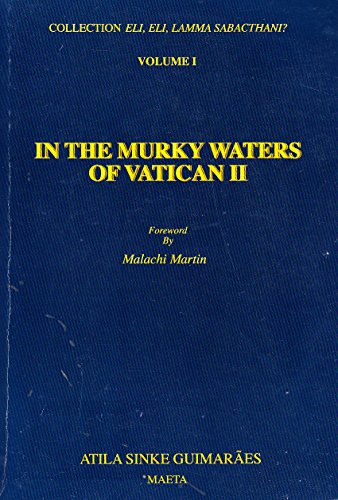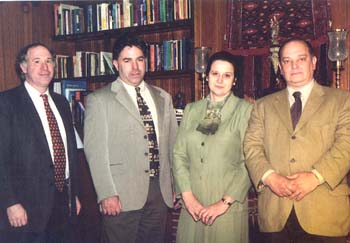 I believe that this exchange says it as well as anything concerning Baptism of blood and baptism of desire. Both of them( bob ad bod ) MUST accompanied by the will of those to be baptized with water if at all possible whereas in fact that is not possible while the person is alive as death itself prevents the water by baptism which all are expected to receive while they are alive
.Lionel:
I believe that this exchange says it as well as anything concerning Baptism of blood and baptism of desire. Both of them( bob ad bod ) MUST accompanied by the will of those to be baptized with water if at all possible whereas in fact that is not possible while the person is alive as death itself prevents the water by baptism which all are expected to receive while they are alive
.Lionel:
O.K but is BOD and BOB without the baptism of water physically visible or not in 2016. Since if it was not objectively seen then it could not be an exception to the Feeneyite interpretation of the dogma EENS.
You may speculate as much as you want on BOD and BOB but I assume you are mentioning it with reference to Feeeyite EENS.
_______________________________________
Rev. Fr. J.F.C.,
I thank you for your consideration in sending, for the second time, your question/objection to TIA, requesting texts from the Magisterium that prove baptism of blood is common Catholic doctrine.
Lionel:
It is accepted Catholic doctrine due to a campaign to make it such however the issue is : does it refer to a physically visible case in the present tme?
____________________________________
1. On baptism of blood it seems to me that the description of Fr. Alban Butler posted by TIA on our website is in perfect agreement with the Catechism of St. Pius X. In Part IV on the Sacraments, Chapter II on Baptism (§ 4), it states:
Q: Can the absence of Baptism be supplied in any other way?
A: The absence of Baptism can be supplied by martyrdom, which is called Baptism of Blood, or by an act of perfect love of God, or of contrition, along with the desire, at least implicit, of Baptism, and this is called Baptism of Desire (Original online here).
Lionel:
Fine theoretically.However irrelevant to the dogma EENS?
________________________________________
2. It appears that the baptism of blood is an extreme case of the baptism of desire. Indeed, that person who is offering his life actually is doing so because he has the desire to enter the Catholic Church. Thus, I believe that you may be interested also in knowing the doctrine of the Magisterium on baptism of desire, which applies as well to the baptism of blood. In this supposition, I transcribe some texts for your perusal.Lionel:
O.K Speculation. It is not an issue relative to EENS as it was interpreted by the 16th century missionaries.
___________________________________________
About the baptism of desire accepted as an exception to the rule that everyone should be baptized with water, please read the Encyclical Quanto conficiamur. In it Pius IX states that those outside of the Church may be exceptionally saved through baptism of desire. In case you do not have an easy access to this encyclical, I am transcribing the excerpt that pertains to the topic:
Lionel:
Yes in a theoretical sense. These documents do not refer to an explicit for us BOD or BOB.
_____________________________________________
Here too, our beloved sons and Venerable Brethren, it is again necessary to mention and censure a very grave error that is unfortunately entrapping some Catholics who profess that it is possible for men to arrive at eternal salvation although they live in error and are alienated from the true Faith and Catholic unity. Such opinion is absolutely opposed to Catholic teaching.
Lionel:
This passage supports Feeneyite EENS.
______________________________________________
We know and you know that there are those who are struggling with invincible ignorance about our most holy Religion. Uprightly observing the natural law and its precepts inscribed by God on all hearts and ready to obey God, they live honest lives and are able to attain eternal life by the efficacious virtue of divine light and grace. Because God knows, searches, and clearly understands the minds, hearts, thoughts, and nature of all, His supreme goodness and clemency do not permit those who are not guilty of deliberate sin to suffer eternal punishment.
Lionel:
O.K in general this is what he believes.
He is still referring to a hypothetical case, an imaginary case.If it existed it would be known only to God.
________________________________________________
Also well known is the Catholic dogma that no one can be saved outside the Catholic Church. Eternal salvation cannot be obtained by those who with contumacy oppose the authority and definitions of the same Church, as well as with contumacy oppose her unity and the successor of Peter, the Roman Pontiff, to whom ‘the custody of the vineyard has been committed by the Savior’ (Ecumenical Council of Chalcedon)’ (Recueil des allocutions, nn. 7-8, pp. 480-481).
Lionel:
He is supporting the Feeneyite interpretation of EENS here.
____________________________________________________
3. As for more ancient teachings on the same topic, a letter of Pope Innocent II to the Bishop of Cremona (1140) reads:
We answer to your question: The presbyter who died without the water of baptism, since he persevered in the faith of Holy Mother Church and in the confession of the name of Christ, we affirm without any doubt that he became free of the original sin and reached the joy of eternal life” (Denzinger n. 388).
Lionel:
Again this is speculation.There was no way he could know this for sure.It is irrelevant to the dogma EENS. Also a case in the past cannot be cited as an exception to all needing to be incorporated into the Church as a member for salvation in 2016.
_____________________________________________________
That Pope also quotes St. Augustine and St. Ambrose teaching the same.
4. Pope Innocent III in his letter Debitum pastoralis of 1206 states:
You have communicated to us that a certain Jew, at the edge of dying as he was only among Jews, immersed himself in water saying: ‘I baptize myself in the name of the Father and the Son and the Holy Ghost. Amen.’
We answer saying that the baptizer and the one who receives baptism must be different persons, as we infer from the words of the Lord when, speaking to His Apostles, He said: ‘Go, baptize all nations in the name etc (Matt 28:19). Therefore, the mentioned Jew must be baptized again by another person to show that one is the baptizer and another is the one who receives the baptism. … Nonetheless, if he would have died immediately, he would have flown instantly to the celestial homeland for his faith in the Sacrament rather than for the Sacrament of the Faith (Denzinger n. 413).
Lionel:
Speculation with hope and goodwill. He is still referring to a hypothetical case which must not be projected as being explicitly known to human beings.
________________________________________
5. A brief but important mention to the baptism of desire is also made by Pope Paul III along with the Council of Trent. As a matter of fact, in the official Decree on Justification of that Council, chapter IV, it is affirmed:
By which words, a description of the Justification of the impious is given, as being a translation from that state in which man is born a child of the first Adam to the state of grace and of the adoption of the sons of God through the second Adam, Jesus Christ, our Savior. This translation, however, since the promulgation of the Gospel, cannot be effected except through the laver of regeneration, or the desire thereof, as it is written: Unless a man be born again of water and the Holy Ghost, he cannot enter into the Kingdom of God (Denzinger, n. 796).
Lionel:
The laver of regeneration refers to the baptism of water. So this is support for the Feeneyite position of EENS. There are no known cases of the baptism of desire which are an exception.
The desire thereof refers to a theoretical case.For us humans it cannot be explicit.
___________________________________________
6. You may find further documentation of the official Magisterium of the Church in Denzinger-Schonmetzer (nn. 3866-3973), in which is transcribed a Decree of the Holy Office (August 8, 1949) specifically analyzing the errors of those who make a strict interpretation of the dogma Extra Ecclesia nulla salus without admitting any exception.
Lionel:
This is a reference to the error in the Letter of the Holy Office 1949 in which it was assumed hypothetical cases were objectively known and visible and they were de facto exceptions to the traditional Feeneyite interpretation of the dogma EENS.From this error the new theology of Ratzinger-Rahner was born, even Archbishop Lefebvre affirmed the false premse and the new theology.It is the norm among the FSSP priests and sedevacantists.
_____________________________________________
7. Not of the official Magisterium of the Church but with the greatest authority below it, St. Thomas Aquinas also teaches the same regarding the possibility of salvation outside of the Church in exceptional cases:
Lionel:
A possibility is a possibility.It is not an explicit exception to the traditional interpretation of EENS according to St Thomas Aquinas, St. Augsutine, St. Robert Bellarmine and St. Francis Xavier.
_______________________________________________
It falls to Divine Providence to provide all men with the means necessary for salvation, so long as they do not place obstacles in the way. In effect, if someone raised in the wilds or among savage animals is led by natural reason to follow the appetite for good and to flee evil, it should be considered most certain that God will reveal to him by internal inspiration the things necessary to believe, or that He would command some preacher of the Faith to go to him, as he sent St. Peter to Cornelius (Act 10) (De veritate, q. 14, a. 11, ad 1).
Lionel:
Yes God would send a preacher of the faith. Everyone who is in Heaven is there with faith and baptism. There are only Catholics in Heaven.
_______________________________________________
These are some documents I have at hand without having the leisure of time for a more precise research. I hope they will help you to clarify your doubts.
Lionel:
He is interpreting these documents with the Cushingite error. He assumes invisible cases are visible and then infers that they are known exceptions to the dogma EENS. This is the new theology.
It can be avoided and the conclusion is then traditional.
_________________________________________________

Since TIA has about 3,000 e-mails of our readers asking us serious questions and they are previous to yours, I had to open an exception to answer you now. In eventual e-mails, I hope you will not take it as a lack of courtesy or good will that neither I nor TIA can respond to you with the speed that you and we would like to have.
Asking your prayers,
In Jesu et Maria,
Atila S. Guimarães
_______________________________________________________________
-Lionel Andrades
 I read the book In the Murky Waters if Vatican Council II by Atila S. Guimarães a long time back. I was impressed.
I read the book In the Murky Waters if Vatican Council II by Atila S. Guimarães a long time back. I was impressed.






